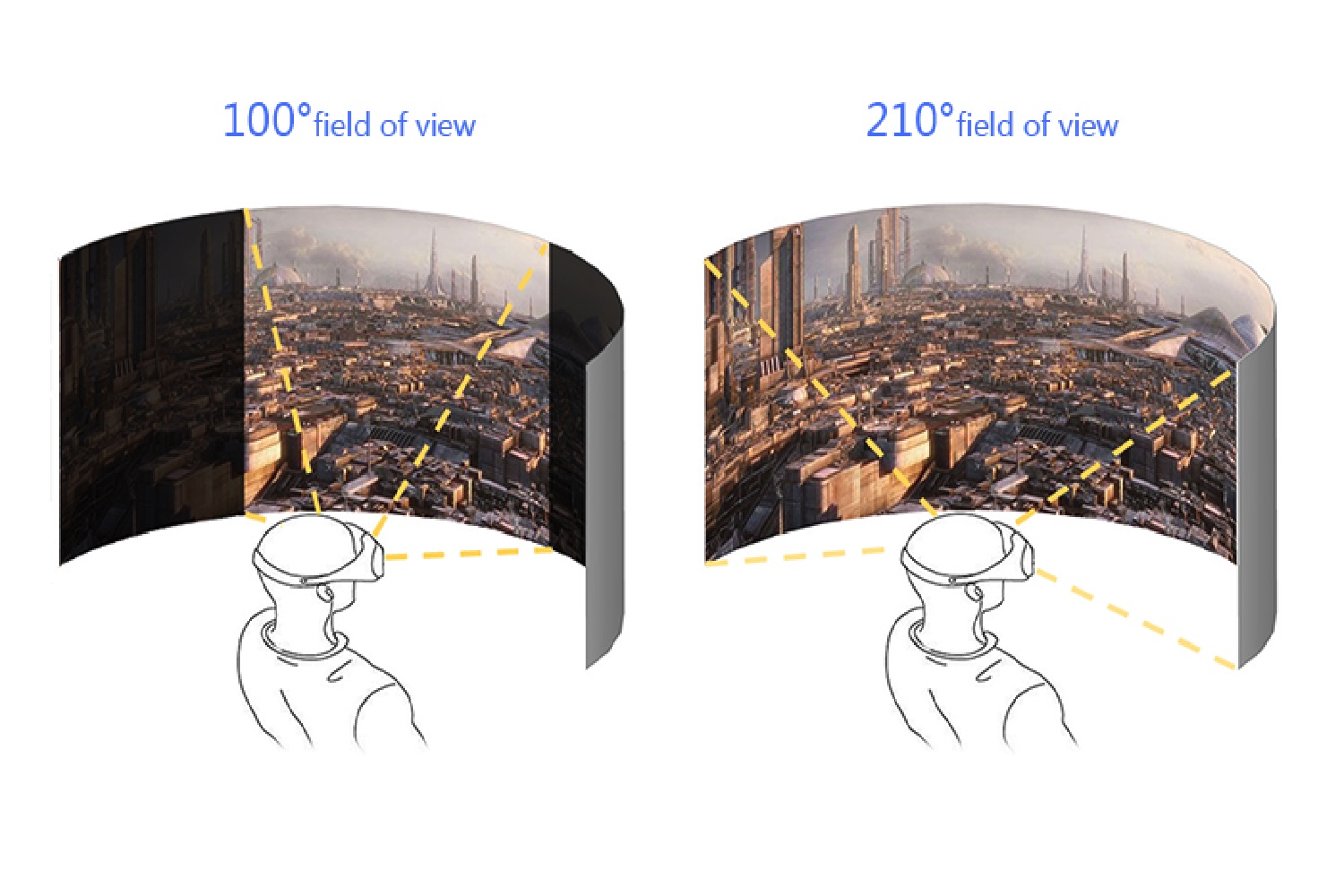One roadblock in achieving this goal, however, is the fact that many current virtual reality headsets only offer a 110-degree field of vision. What this means is that, instead of viewing things the way we do in real life, VR headsets like Oculus and HTC display black edges along the bilateral part of your vision.
This is where new Kickstarter project EyeForce hopes to beat the established giants — by doubling your available FOV.
“When you put on an Oculus headset or an HTC Vive, you can see the black borders around the edge of the picture,” creator Li Zheng told Digital Trends. “EyeForce is different. It has 210-degree of field of vision and 3,840-by-1,080 resolution. This lets you see things in your peripheral vision and react to them faster. It’s very noticeable, for example, in a driving simulation where you are aware of what is happening all around you. There is more immersion in what you are doing.”
The extra-widescreen goggles probably aren’t the world’s greatest fashion statement, but they definitely make for an interesting concept and — provided they work as well as Zheng described them — could offer a preview of how the next generation of VR headsets will appear.
The headset also has some impressive specifications, with OLED display, and 9-axis motion tracking. Equally tantalizing is the bargain price tag of $399 on Kickstarter, even though you’ll have to wait until April next year to get your hands on it.
“We’ve been working on this since early 2014, before Oculus was bought by Facebook,” Zheng said. Whether his technology can match Oculus’ trajectory remains to be seen. If you’re looking for an impressive, low-cost VR headset it’s certainly worth exploring, though.
Editors' Recommendations
- This new VR headset beats the Vision Pro in one key way and is half the price
- Meta wants its next VR headset to replace your laptop
- HP’s Reverb G2 Omnicept Edition is a VR headset that knows when your pulse is up
- HTC’s Vive Pro Eye, a $1,600 VR headset with eye-tracking, is all business







